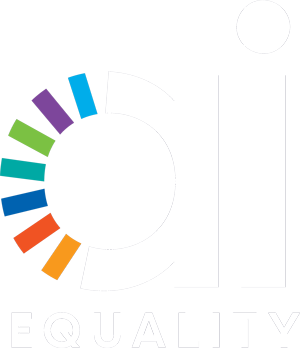AEDT Risk AssessmenT
A Critical Tool in Talent
An AEDT risk assessment is a critical tool that exposes potential issues in bias and legal compliance when using AI in recruiting, hiring, developing, or promoting talent. It is an essential tool for organizations that want to leverage the benefits of AI while minimizing the risks (both legal and reputational), and it is necessary for a number of reasons:
To Identify and Mitigate Bias
AEDTs, like any algorithm, can perpetuate or even amplify existing biases in data. A risk assessment helps uncover risks around AEDT biases, especially biases that may violate the equal protection clause, whether they are related to race, gender, age, or other protected classifications. By identifying potential biases, your organization can take steps to mitigate them and advance more effective and fair decision-making.
To Gain Insight on Legal Compliance Risk
A risk assessment is a valuable first step in gaining insight on compliance risk, helping avoid potential legal challenges with local, state, or federal regulations. The risk assessment tool helps establish a grounded understanding of the relevant compliance landscape, informing decisions on future audit engagements, such as New York City’s Local Law 144, which mandates bias audits for AEDTs.
To Protect Your Reputation
The use of biased AEDTs can lead to discriminatory practices in talent decisions, which can severely damage the reputation of any organization. An AIEquality Risk Assessment helps identify and address potential issues before they become public or widespread, allowing your organization to proactively protect the image of your enterprise.
To Build Trust
By demonstrating a commitment to efficacy and transparency through risk assessments, organizations can build trust with job seekers, current employees and the public. If stakeholders can buy into the upside of AI because they trust the downside risks are mitigated, a positive culture that promotes quick implementation of innovations can be created. This is particularly important in today’s environment, as the use of AI in talent decisions becomes increasingly prevalent.
To Promote Informed Decision-Making
A risk assessment can go beyond gaining insight on compliance risk and audit needs. It can also help organizations understand how their AEDTs are being used across their workforce, leading to insights that can improve their AI and talent resource allocation overall effectiveness in mitigating risk.
Distinguish Your Business with AIEquality
The AIEquality Risk Assessment helps employers identify their level of potential risk exposure by reviewing their internal and outsourced AI employment practices. The assessment helps determine best next steps toward ensuring AEDT decisions are designed to deliver fair and equitable outcomes.. The AIEquality Risk Assessment considers geographic requirements and analyzes the decision processes to proactively identify algorithms or applications that could create potential biases and discriminatory outcomes in the workplace. Our Risk Assessment results are a diagnostic step in the AIEquality process, and all results are confidential to the client. For each assessment, the client will receive a diagnostic report that will include an expert consultation, identifying potential risk areas and providing certain suggested proactive remedies for the client to evaluate and implement. Specific evaluation of relevant algorithms, data inputs, and decision-making processes to test for bias can be delivered as a follow-up step through the AIEquality Compliance Audit.
The advantages in conducting an AEDT risk assessment are notably salient in today’s rapidly evolving AI landscape given the need for quick, risk informed decisions around AEDT opportunities. Reach out to AIEquality today for a comprehensive AEDT risk assessment that promotes knowledgeable talent decision making processes.
Disclaimer: The information provided on this website does not, and is not intended to, constitute legal advice; instead, all information, content, and materials available on this site are for general informational purposes only. Information on this website may not constitute the most up-to-date legal or other information. This website contains links to other third-party websites. Such links are only for the convenience of the reader, user or browser; AI Equality and its members do not recommend or endorse the contents of the third-party sites. Readers of this website should contact their attorney to obtain advice with respect to any particular legal matter. No reader, user, or browser of this site should act or refrain from acting on the basis of information on this site without first seeking legal advice from counsel in the relevant jurisdiction. Only your individual attorney can provide assurances that the information contained herein—and your interpretation of it—is applicable or appropriate to your particular situation. Use of, and access to, this website or any of the links or resources contained within the site do not create an attorney-client relationship between the reader, user, or browser and website authors, contributors, contributing law firms, or committee members and their respective employers. All liability with respect to actions taken or not taken based on the contents of this site are hereby expressly disclaimed. The content on this posting is provided “as is;” no representations are made that the content is error-free.

